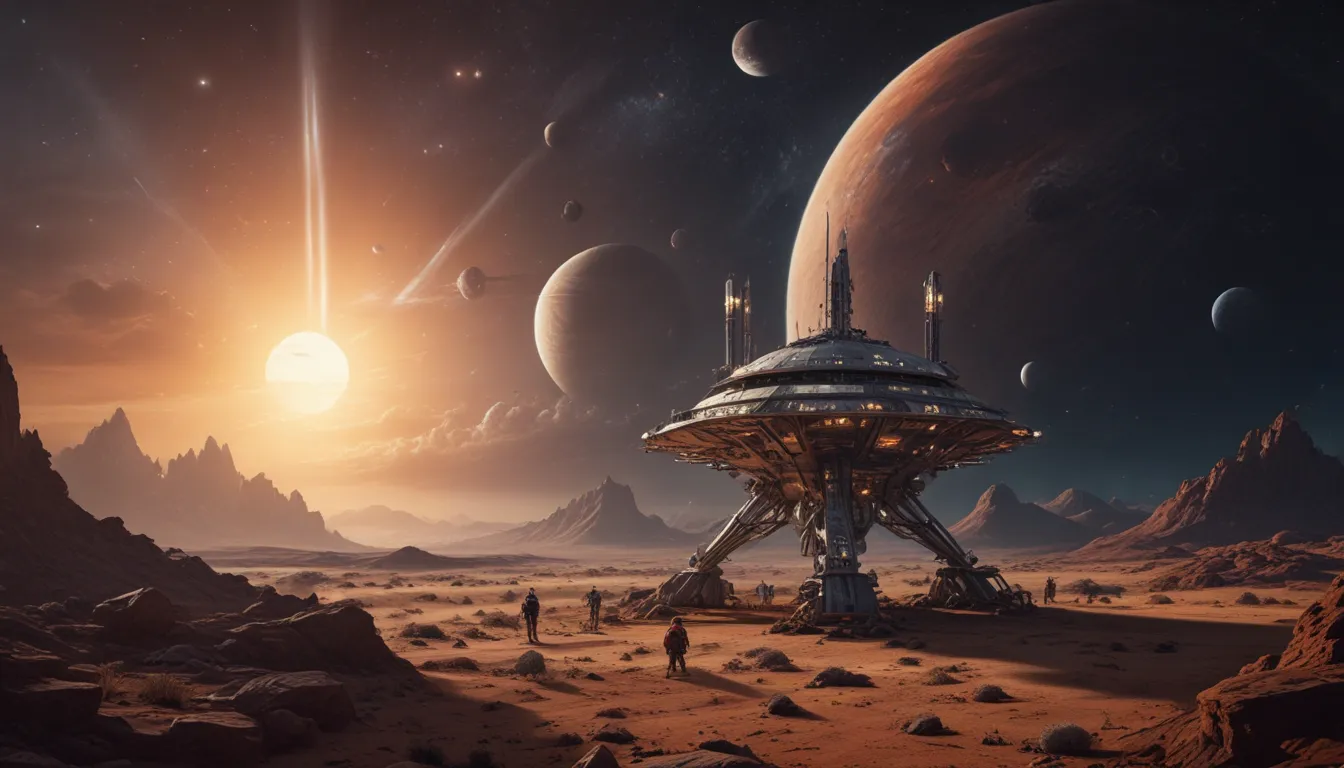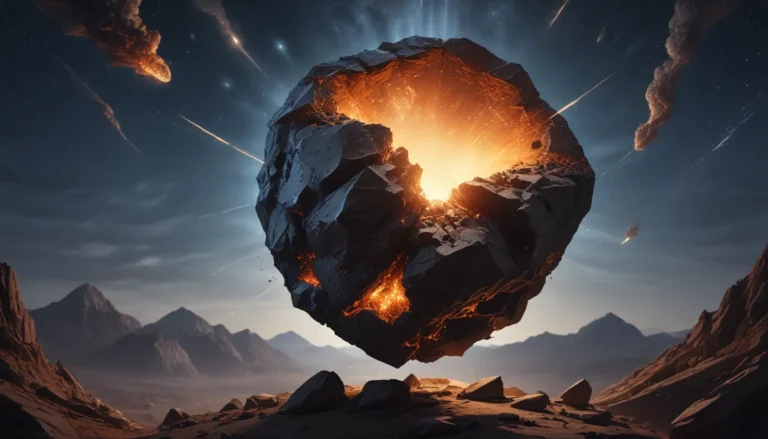The pictures we use in our articles might not show exactly what the words say. We choose these pictures to make you interested in reading more. The pictures work together with the words but don’t take their place. The words still tell you the important facts.
Space has always captivated mankind with its vastness and mysteries waiting to be uncovered. Among the crucial aspects of space exploration lies the concept of in situ resource utilization (ISRU), which involves extracting and using resources found in space to support human missions. Space-based ISRU offers immense potential for future space exploration endeavors, allowing astronauts to become more self-sufficient and reducing the reliance on Earth for resupply missions. Let's delve into 16 intriguing facts about space-based in situ resource utilization, exploring its significance, challenges, and potential applications to revolutionize the future of space exploration.
Unlocking the Potential of Space Resources
Space-based In Situ Resource Utilization (ISRU) focuses on extracting and utilizing natural resources from outer space to sustain human activities. This includes processes like mining minerals, extracting water, and generating energy from celestial bodies.
Pioneering Sustainable Space Exploration
ISRU plays a crucial role in long-duration space missions, such as establishing permanent bases on the Moon or Mars. By utilizing local resources, it decreases the reliance on Earth for supplies, making space travel more sustainable and cost-effective.
Harvesting Water on the Moon
A key resource targeted for extraction through space-based ISRU is water ice located at the Moon's poles. Water can be separated into hydrogen and oxygen, providing essential elements for life support systems and rocket propellant.
Asteroid Mining Expeditions
Asteroids hold a wealth of valuable resources, including precious metals, rare earth elements, and water. Space-based ISRU aims to develop technologies for mining and processing asteroids, opening up a new frontier for resource exploration.
Utilizing Lunar Resources for Propulsion
Space-based ISRU envisions using resources from the Moon, such as mined regolith and extracted water, to create rocket propellant. This significantly reduces the cost of launching missions into deep space from Earth.
Innovations in 3D Printing Technology
Space-based ISRU explores the application of additive manufacturing, or 3D printing, to manufacture tools, spare parts, and even habitats on distant celestial bodies. This technology minimizes the need to transport bulky items from Earth.
Promoting Sustainability in Space
By tapping into local resources, space-based ISRU decreases the necessity for resupply missions and lessens the environmental impact of space exploration. It sets the stage for a sustainable human presence beyond Earth.
Helium-3 as a Fusion Power Source
Space-based ISRU looks into extracting helium-3, a rare isotope abundant on the Moon's surface. Helium-3 could serve as a fuel for nuclear fusion, offering a clean and practically limitless energy source.
Embracing Commercial Ventures
Commercial companies are showing interest in space-based ISRU to capitalize on the vast resources available in space. These ventures hold the potential for significant economic growth and the emergence of new industries.
Preserving Earth’s Finite Resources
By utilizing space-based resources, we can alleviate the strain on Earth's limited resources. ISRU provides a way to conserve our planet while pursuing ambitious scientific and exploratory missions.
Harnessing Solar Power in Space
Solar power plays a vital role in space-based ISRU. By harnessing the abundant sunlight in space, we can generate clean and renewable energy for various operations, including resource extraction and utilization.
Collaborative Efforts for Success
Space agencies and international partners are actively collaborating to advance space-based ISRU. Sharing knowledge, expertise, and resources is crucial for overcoming the challenges of sustainable resource utilization beyond Earth.
Embracing Robotics and AI
Space-based ISRU heavily relies on robotics and autonomous systems for mining, drilling, and processing operations. Advancements in AI and robotics are essential for efficient resource extraction and utilization.
Discovering New Frontiers and Scientific Insights
Space-based ISRU not only facilitates resource utilization but also unlocks opportunities for scientific discoveries. Examining celestial bodies up close offers valuable insights into the origins of our solar system and the universe.
Driving Down Mission Costs
A primary goal of space-based ISRU is to reduce the overall costs of space missions. By leveraging locally available resources, the need for expensive launches and resupply missions from Earth can be minimized.
Envisioning Human Civilization Beyond Earth
Space-based ISRU serves as a stepping stone toward expanding human civilization beyond Earth. By establishing self-sufficient habitats and utilizing resources on other celestial bodies, we pave the way for a future where humans can thrive in space.
Concluding Thoughts on ISRU
Space-based In Situ Resource Utilization (ISRU) stands at the forefront of future space exploration endeavors, offering immense potential for sustaining long-duration missions and potentially establishing extraterrestrial settlements. By tapping into resources like water, minerals, and gases on celestial bodies such as the Moon and Mars, we can reduce the need for launching resources from Earth and explore new horizons in space. Advancements in technology and the growing interest in space exploration make ISRU a vital component of our cosmic journey.
FAQs about Space-Based ISRU
Q: What is space-based In Situ Resource Utilization (ISRU)?
A: Space-based In Situ Resource Utilization (ISRU) involves extracting and utilizing resources found on celestial bodies, such as the Moon and Mars, to support human space missions and future settlements.
Q: How does ISRU benefit space exploration?
A: ISRU helps reduce Earth's dependence for resources by utilizing locally available materials, leading to cost savings, enhanced mission sustainability, and the potential for long-duration space missions and colonization of other planets.
Q: What kind of resources can be utilized through ISRU?
A: Resources like water, minerals, gases, and other raw materials found on celestial bodies can be processed and utilized for various purposes such as fuel production, habitat construction, and life support.
Q: Is ISRU a new concept in space exploration?
A: While the concept of ISRU has been explored for several decades, recent technological advancements and increasing interest in space exploration have accelerated its development and implementation.
Q: Are there any ongoing ISRU missions?
A: Yes, ongoing missions like NASA's Lunar Resource Prospector and the Mars Oxygen In-Situ Resource Utilization Experiment (MOXIE) aboard the Mars 2020 rover aim to demonstrate and test ISRU technologies and capabilities.
Exploring the captivating world of space-based ISRU unveils a treasure trove of possibilities for humanity's future in the cosmos. Utilizing resources from celestial bodies could revolutionize space exploration, making sustainable long-term missions a reality. As technology advances and interest in space exploration grows, the allure of space colonization becomes more prominent, promising new discoveries and frontiers that could shape the course of human history. Trust in the journey into the cosmos as we continue to push the boundaries of what's possible in space.






